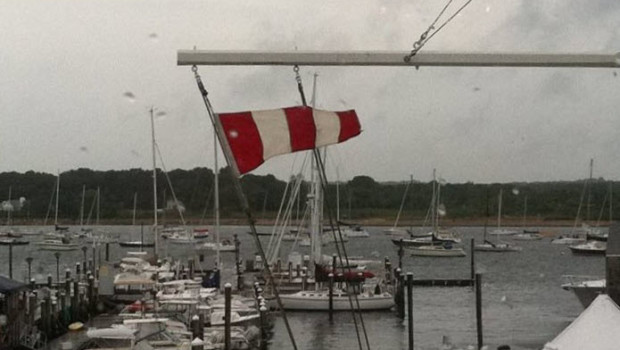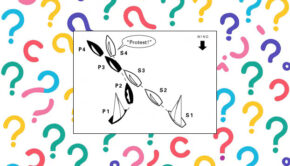The use of the Answering Pennant?
Published on May 29th, 2014
by Jos M. Spijkerman, International Judge/Umpire
In a couple events fairly recently I was confronted with the use of the answering pennant – AP in short – in combination with a numeral pennant:
AP over one and a bunch of class-flags
or
AP over four with another set of class-flags
At the last event I was attending, The Delta Lloyd Regatta, we had a beautiful week with lots and lots of sunshine but, alas, also a couple of days with less than perfect wind. In fact, no wind. Hence the postponements.
During the day, when these combinations of flags were used, I was confronted with a couple of discussions about the exact meaning. I thought it was obvious and had not considered the arguments given.
In my understanding the numeral pennant under the AP gives you the number of hours the start is postponed from the ORIGINALLY scheduled time. For example:
The Finns were scheduled to start at 14:00 hours (2PM).AP over numeral pennant three over the Finn-class flag would make that start time: (2+3=5) Five o’clock.
At half past four the signal flags are changed and now the same flagpole shows:
AP over numeral pennant four over the Finn-class flag. That would make the start-time in my opinion: (2+4=6) Six o’clock.
But then someone argued:
With the hoisting of the first flags the scheduled time becomes 17:00 hours (5PM). If you then hoist the AP over four, the new starting time must be taken from that new time i.e.: (5+4=9) Nine o’clock in the evening.
So it depends on what is meant by “scheduled” starting time. I am always using the ‘scheduled’ time as (obligatory) printed in the Sailing Instructions (Sis). But was confronted with a couple of knowledgeable sailors who used the second system.
In my opinion the signal should be clear, precise and not being subject to any other possible interpretation. Suppose you use the number one pennant repeatedly? The first one makes the (printed) schedules time an hour later. But the second one, two hours, and the third one, three hours later!
If any sailor missed looking at the mast and noticing that the one was lowered and hoisted again, he would have a hard time figuring out at what time he was suppose to start. In contrary to always use the printed (SI) time, no matter how long you haven’t looked, the pennant shown is always added to the printed time and that gives you the new time.
I would appreciate some feedback and/or comments. Click here to submit.









 We’ll keep your information safe.
We’ll keep your information safe.